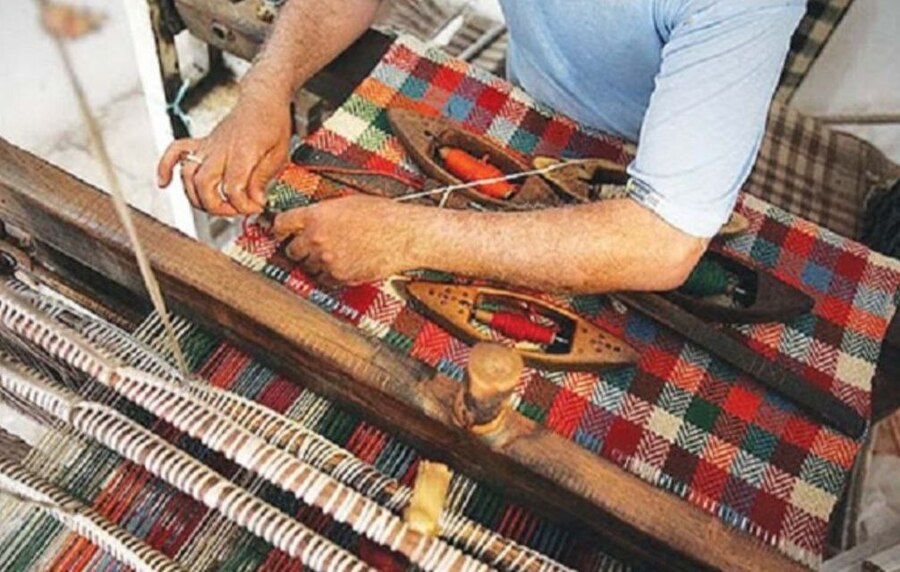Tan
It is a thread in which one of its ends begins from the front of the machine next to the spinner and stretches to the other side of the machine and it is used as the "Kiraka" length thread. The spinner uses "Makouk" to intricate this thread (Tan) into the wraps and make the fabric.
(See figure 75)
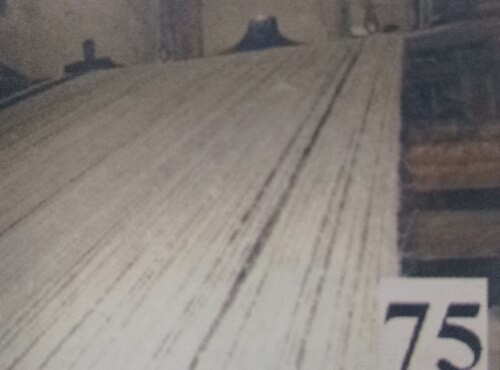
Trunda
A bunch of threads hang from the machine and are signed with particular numbers or colors to be put on the spinning machine. Black, white, or any other colorful thread will have their particular place in a spinning machine and this is determined by the Trunda. (See figure 76)
The number of Barmal's threads in the Trunda is as follows: normal Barmal has 100 pairs of threads for its main part and 20 pairs for the margins (a total number of 120 pairs of threads), wide Barmal needs 120 pairs of threads for its main part and 20 pairs for its margins (a total number of 140 pairs of thread), and 140 pairs for the main part and 20 pairs for the margins (a total number of 160 pairs of threads).
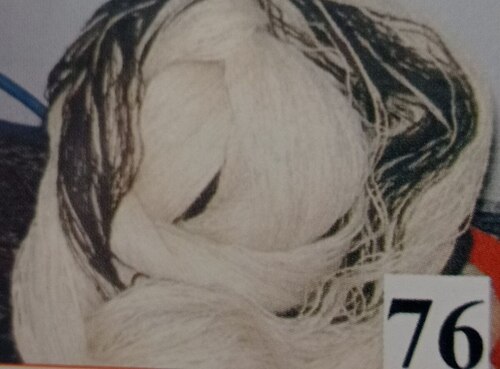
Main Part
It is the largest part of the fabric to be made that will surround the designed patterns. Most of the threads used in this part, no matter what color they are, will be used as the main part of the fabric; for example, they say: "This Barmal is red or it is white".
Takhta
It is also a part of the fabric that is as wide as the Daffa which is called "Takhta". Jajm and Popashmin have four Takhtas, Barmal has two Takhtas, and a narrow, thin Bouzou will be spun in a narrow long Takhta. Some spinning machines have wide Daffa, Gurd, and Shana which enables them to make two Takhtas in one spinning process. Thus, these kinds of wide machines can make Jajm and Popashmin in two Takhtas, and Barmal is made in one Takhta.
Tanraw (Spun)
The fabric is made with spinning machines like Jajm, Barmal, Popashmin, Bouzou, Jaw, and Kham. On the spinning machine that piece of thread that is spun with Makouk with the "Wrap" is also called Tanraw.
(See figure 77)
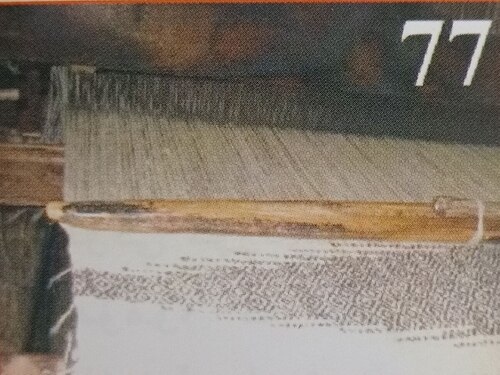
Tewadan
It means to move the Makouk from right to left which will lead to intricating the wefts and wraps. It is also used for the wraps' threads. (See Figures 78 and 79)
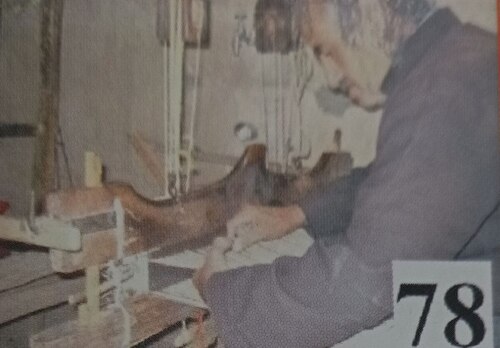
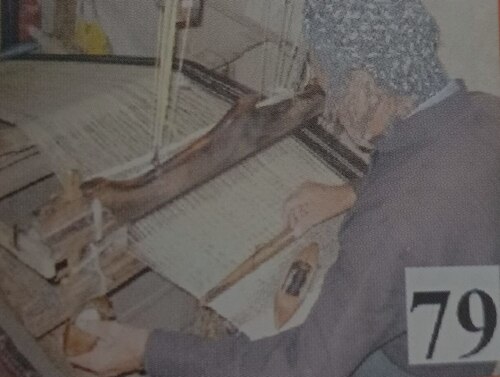
Jawatana: Jolatana
Jawalouka: Jolatana
Jola (Spinner)
The spinner master, the man or woman who sits on the spinning machine to make Jajm, Barmal, Popashmin, Bouzou, Jaw, Kham, etc.
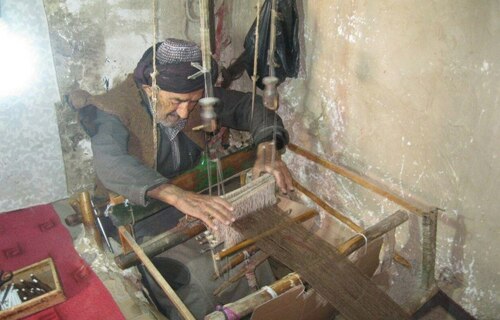
Jolayi (Spinning)
The work of spinning fabrics with a spinning machine.
Charag
A bunch of threads that are located between Dargurd ties. They are separated in sets of twenty, in other words, they determine the limit between Gurd's "Pe" to the width of the fabric.
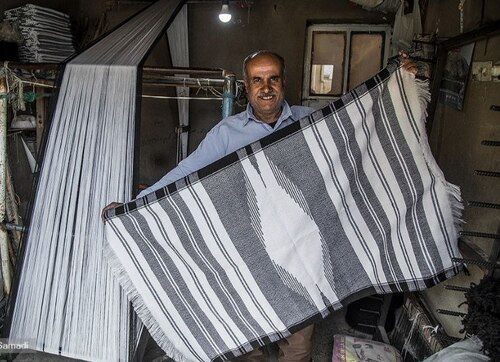
Chila
Each one of the spun fabrics has a special size. The spinner must remember this while he begins to install the threads on the machine. For instance, a Barmal is as long as 156 cm to 160 cm. If an amateur spinner uses 200 cm or more threads to make a Barmal, he will have to stop the work when he finishes the standard size because a Barmal that is larger than its normal size is not a good one. Here, they will have a lot of threads left that cannot be used for anything else. The left threads which are as many as eighty to a hundred and sixty threads as long as one meter that must be cut and thrown away. This bunch of threads that will be tied is called "Chila".
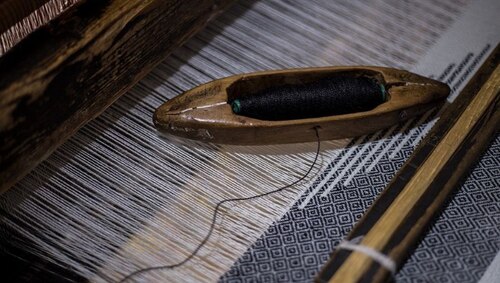
Chikana
Some particular Kharak to clean the cotton such as rolling Kharak, with its handle to be spun and the cotton will be spun, too. The cotton will be spun so that its useless parts will be separated.
Khorang
The thread that is not dyed yet and its color is natural. The Khorangs include: white, black, red, blue, yellow, and gray. Although in spinning the red color does not mean the blood color but rather a crimson tone that looks like brown.
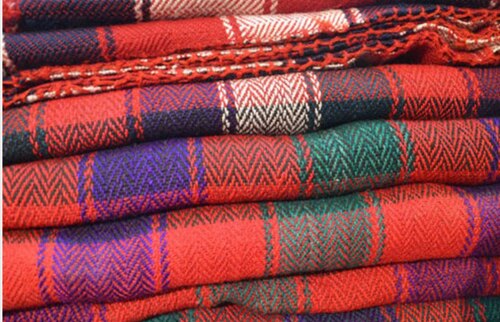
Khuri: Wool
Daw: Weft
Dawtana: Jolatana
"Source: a visit to the spinning workshop, Samdi, Abdullah"

